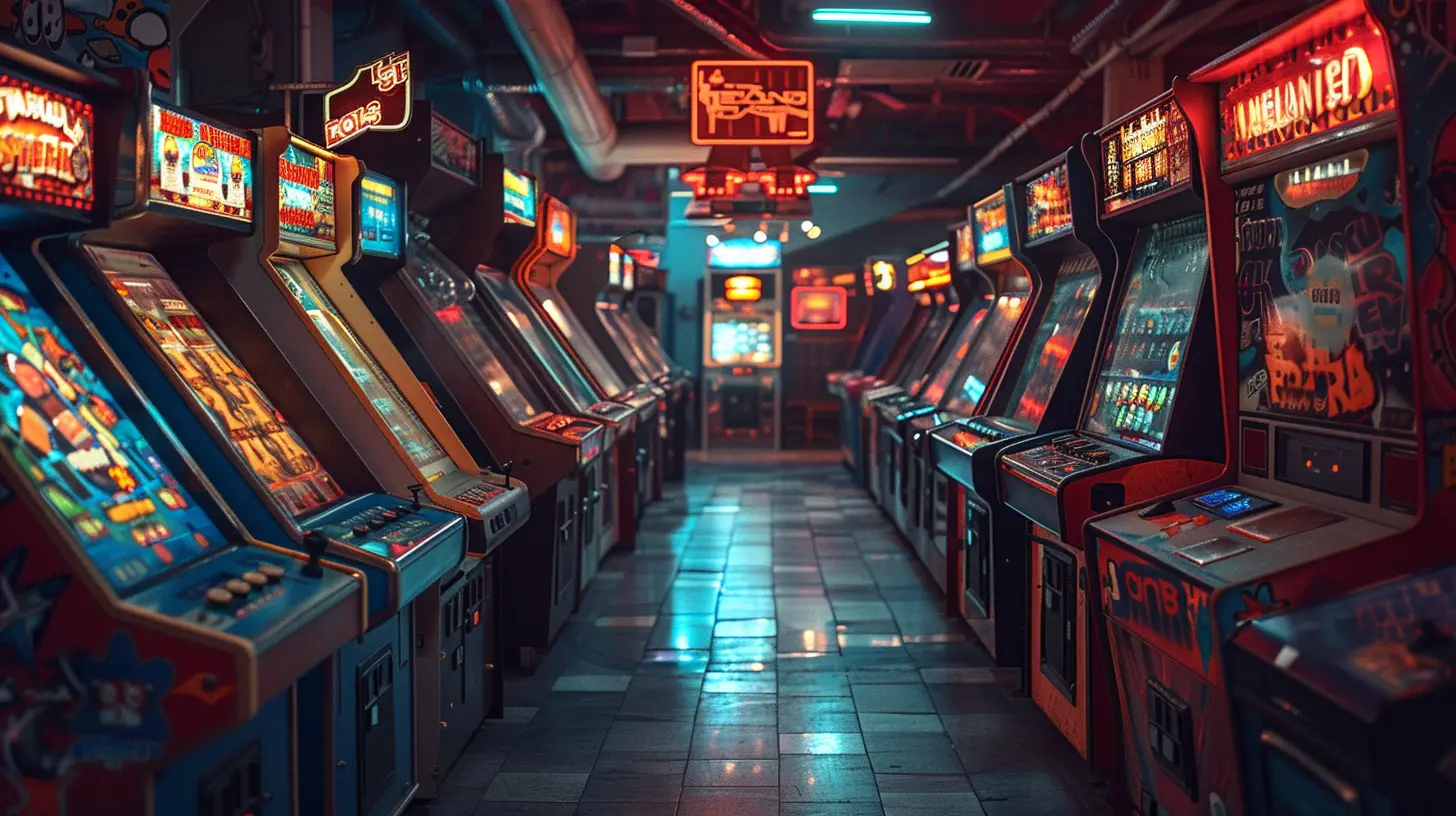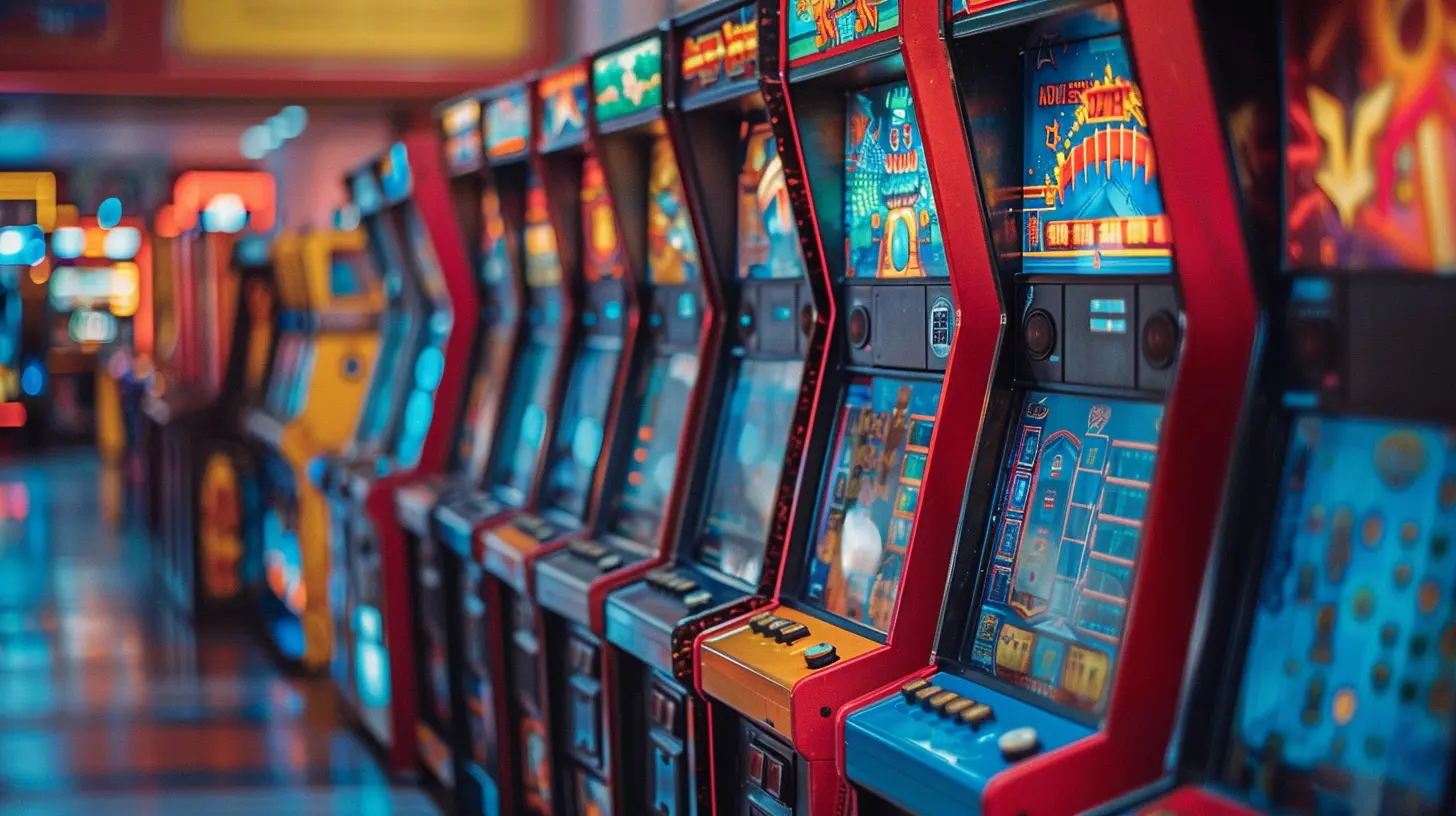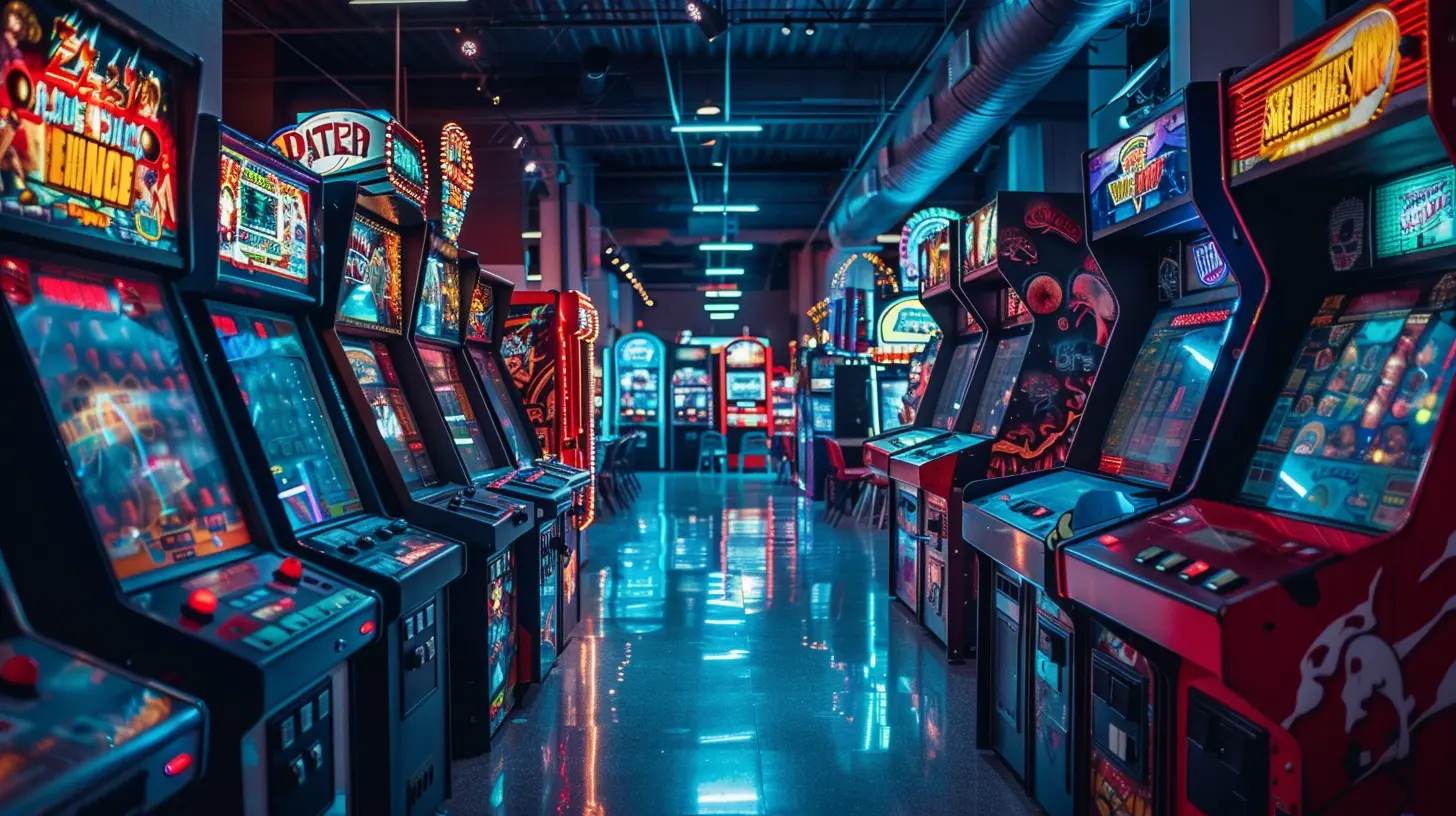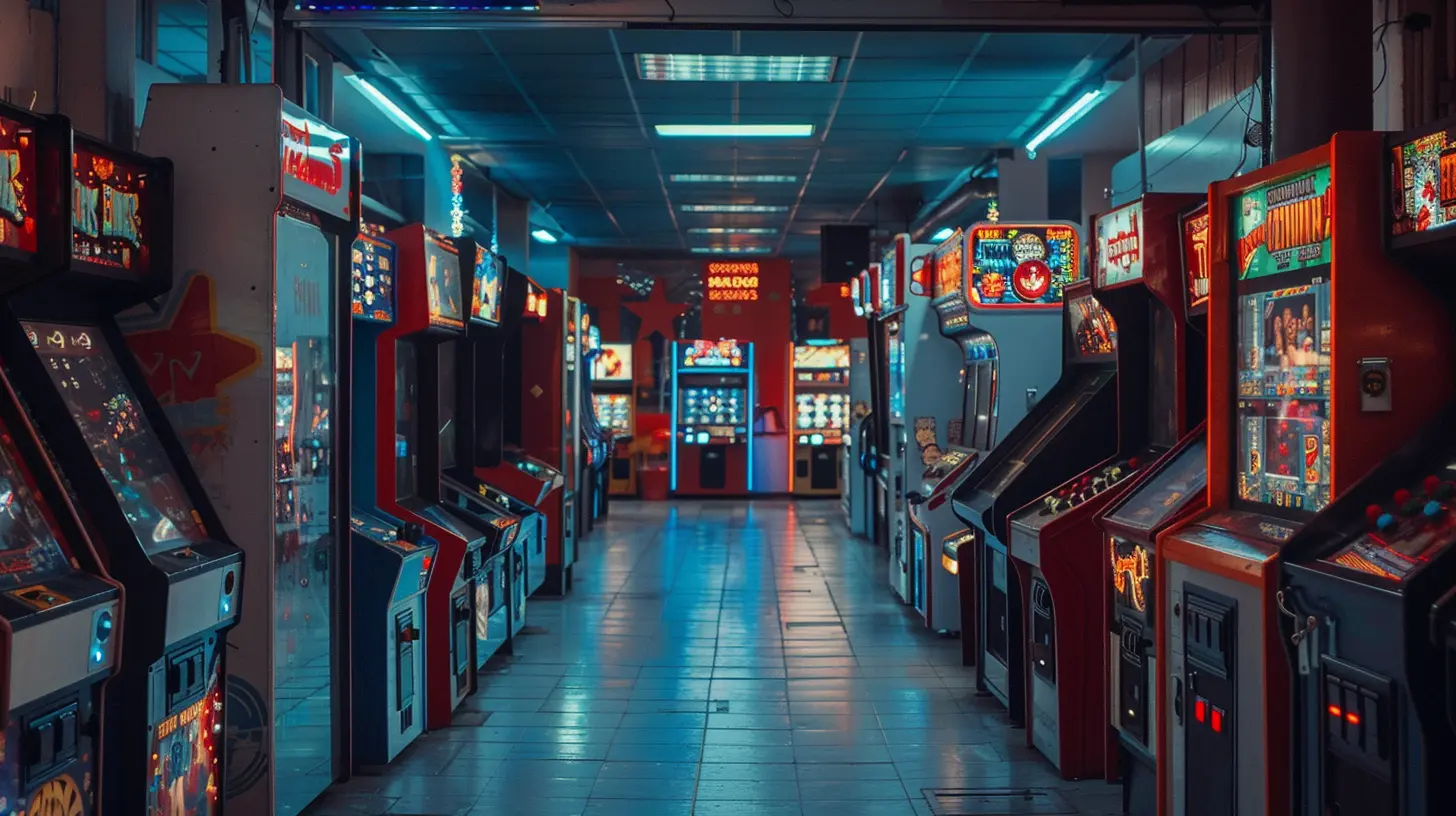The Decline and Rise of Coin-Operated Machines: A Look at the Arcade Industry
3 October 2025
Arcades. Just saying the word feels like stepping into a time machine, doesn’t it? For those of us who grew up in the golden age of gaming, the image of an arcade is etched in our memories. A dark room lit by the glow of CRT screens, the adrenaline-pumping sounds of 8-bit soundtracks, and the clink of quarters in our pockets ready to fuel another shot at beating the high score. It was the place to be—a social hub and a battleground all rolled into one.
But then, like a harsh game-over screen, it all started to fade. Arcades, once the beating heart of gaming culture, began to vanish. What happened? Why did these coin-operated machines fall from grace, and how have they managed to rise again when so many thought they were history? Let’s hit start and dive into the rise, fall, and unexpected comeback of the arcade industry.
The Golden Age of Arcades: When Gaming Was King
The golden age of arcades, roughly spanning the late ‘70s to the early ‘90s, was a phenomenon. It wasn't just about the games themselves—though classics like Pac-Man, Donkey Kong, and Street Fighter II were masterpieces in their own right—it was about the experience. Arcades were vibrant, noisy, and alive. Kids, teens, and even adults gathered to test their reflexes, their wits, and, let’s be honest, their wallets.During this era, coin-operated machines were everywhere. Malls, movie theaters, bowling alleys—heck, even laundromats had a cabinet or two. Arcades weren’t just places to play games; they were communities. Gamers would line up quarters on a machine to signify their spot in line for "next game," and friendships (or rivalries) were forged in the heat of 1v1 battles.
It wasn’t just nostalgia driving this boom; it was economics. A single arcade machine could pull in hundreds, sometimes thousands, of dollars a week—one coin at a time. For developers and arcade owners, it was a literal goldmine. Everything seemed unstoppable.
The Decline: How the Mighty Fell
And yet, by the mid-‘90s, the arcade industry was on life support. What happened? How did an industry that once thrived on shiny quarters start gathering dust? Well, it wasn’t one thing—it was a perfect storm of issues that pressed the self-destruct button.1. The Rise of Home Consoles
Let’s not beat around the bush: home consoles were the arcade killer. When systems like the Nintendo Entertainment System (NES), Sega Genesis, and later the PlayStation hit the market, they brought the magic of gaming right into your living room. Why go to an arcade when you could buy a game once and play it as much as you wanted? Home consoles were convenient, cost-effective, and they just kept getting better.By the late ‘90s, consoles were capable of running games nearly on par with arcade machines. Games like Tekken, Mortal Kombat, and Street Fighter became household staples, effectively siphoning off the audience that once kept arcades alive.
2. The Cost of Innovation
Let’s face it—arcade games are expensive to produce. While home consoles started riding the wave of mass production, arcade machines were becoming increasingly niche and expensive. Developers had to spend big bucks to make games that looked and felt better than what you could play at home. The result? Fewer developers were willing to invest in the arcade scene.Oh, and don’t forget the cost to arcade owners. Running a room full of machines wasn’t cheap—maintenance, repairs, and electricity bills added up fast. As profits dwindled, many owners simply couldn’t justify keeping the doors open.
3. Changing Social Habits
By the early 2000s, our social lives were shifting. People were spending more time online, and multiplayer gaming was transitioning from in-person battles to online matchmaking. Add in the rise of mobile gaming, and the arcade—a place that thrived on human interaction—felt a bit out of sync with the times.
The Revival: Wait…Arcades Are Back?
Just when everyone thought arcades were relics of the past, they started creeping back into the public consciousness. And no, this isn’t just a nostalgia trip. Modern arcades are thriving, but they’ve evolved. Think of it like a level-up—a smarter, savvier version of what we loved back in the day.1. The Rise of Barcades
Ever heard of barcades? These are essentially arcades for adults, complete with craft beer, cocktails, and the classic cabinets we grew up playing. Barcades have tapped into the nostalgia of millennials, who are now old enough to combine their childhood love of gaming with their adult love of, well, alcohol. You’ll find retro classics like Galaga and NBA Jam sitting alongside pinball machines, dartboards, and sometimes even modern-day multiplayer setups.Barcades struck gold by taking the classic arcade vibe and giving it a social, grown-up twist. Instead of being a place where kids blow their allowance, it’s where adults go for a night out.
2. Modern Gaming Meets Arcades
It’s not just about retro gaming anymore. Many newer arcades are embracing modern technology. From immersive VR experiences to massive multiplayer cabinets for games like Mario Kart Arcade GP DX or rhythm games like Dance Dance Revolution, arcades are now offering experiences you simply can’t replicate at home.Some locations are even combining arcades with other activities—bowling alleys with gaming rooms, escape rooms with arcade cabinets, and esports arenas designed to host competitive gaming events.
3. Pop Culture Nostalgia
Pop culture has given arcades a shiny new coat of paint. From movies like Wreck-It Ralph to TV shows like Stranger Things, the imagery of a bustling arcade has been making its way into mainstream entertainment. Nostalgia is powerful, and for many of us, it’s the reason we’re willing to go back and relive those joystick-filled memories.
Why Arcades Still Matter in 2023 and Beyond
So, why do arcades still hold a place in our hearts? Because they represent more than just gaming. They’re about human connection. Sure, gaming at home is fun, but there’s something magical about standing shoulder to shoulder with someone, sharing laughs (and maybe a little smack talk) over a game of Mortal Kombat.Arcades are also a reminder of simpler times. In a world that’s more digital, more isolated, and more fast-paced, walking into an arcade feels like stepping into a pocket of the past—a world where you didn’t need a gamer tag or an internet connection to have fun.
And let’s not forget: they’re just a blast. Whether you’re a hardcore gamer chasing high scores or a casual player who just wants to kill some time, there’s something undeniably joyful about the world of arcades.
Closing Thoughts: A New Era for Coin-Operated Gaming
Arcades may have had their ups and downs, but if this industry has taught us anything, it’s that it’s got a lot of fight left in it. Thanks to creative reinventions, a surge of nostalgic love, and a willingness to evolve, arcades have carved out a place in the modern world.Will they ever reach the dizzying heights of their golden age? Probably not. But that’s okay. What they’ve become is something new—something just as special. So, the next time you pass by a cabinet with a glowing screen and a joystick, don’t just walk by. Pop in a coin. Start a game. And remind yourself why arcades will always have a place in the gaming world.
all images in this post were generated using AI tools
Category:
Arcade GamesAuthor:

Aurora Sharpe
Discussion
rate this article
1 comments
Alice Riggs
The arcade industry’s revival is undeniable. As nostalgia meets innovation, coin-operated machines are not just relics; they’re thriving. The blend of retro charm and modern gaming experiences captivates new generations, ensuring that arcades remain vital to the entertainment landscape. Get ready for an exciting comeback!
October 8, 2025 at 3:17 AM

Aurora Sharpe
Thank you for your insight! The fusion of nostalgia and innovation truly is revitalizing the arcade industry and attracting new audiences. Exciting times ahead!


